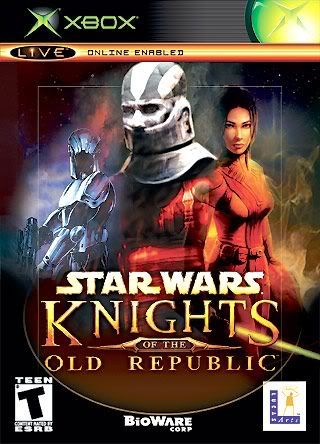
This game is called Star Wars Knights of the Old Republic. This game itself was countlessly awarded and recognized for it
new and interactive game play. By new, I'm meaning new game play interaction to the role playing genre. The game lets you manipulate the story based on the decisions you make in the game. In the story you are a Jedi that has lost his memories and journeys along to regain them. As you quest along you are met by good and bad decisions. If you make dark choices you are drawn closer to the darkside of the force. If you make good one the lightside is your path. At the end of the game the ending is greatly determined by the choices you have made in your quest.
As you can see in the video the player interacts with the story by communicating with the non-player characters. When they stop speaking the player is open to ask more questions or make a decision which can lead to a different part of the story. So the selection 1. and 2. statements act like a hypertext. The hypertext like in the stories which Bolter discuss have the same elements. It makes me wonder what lies ahead with this new text interaction.

This is a fantastic example of how the hypertextual (ergodic, really) sensibility transfers to RPG's. And things like this also help to blur the boundaries between fixed, flat text and interactive, adversarial reading and interaction. Great post.
ReplyDelete